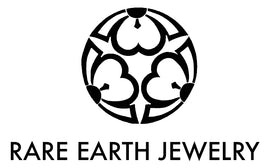Enchanting Opals: Unveiling the Mystique

Opals have captivated cultures for centuries, symbolizing a myriad of beliefs and mystical qualities. Opals are enchanting gems, boasting a kaleidoscope of colors that dance and shimmer in a captivating play-of-color. With a milky and translucent appearance, opals come in various base hues, each stone presenting a unique and iridescent charm. The amorphous structure of opals, composed of silica spheres, creates their distinctive visual allure, making them a timeless and magical choice for jewelry that captures the essence of individuality and elegance.
Hardness: Opals are relatively soft gemstones, ranking around 5.5 to 6.5 on the Mohs scale, making them more susceptible to scratches and fractures compared to harder gemstones.
Symbolism: Opals are often associated with inspiration, creativity, and emotional healing. They are believed to bring luck, happiness, and positivity to the wearer.
In ancient times, opals were considered symbols of love and hope, believed to bring good fortune to the wearer. The play-of-color in opals was associated with various elements, such as fire, lightning, and even the cosmos, adding to their allure.
In medieval Europe, opals were thought to possess the combined virtues of all gemstones, making them a symbol of hope and purity. On the contrary, there were superstitions surrounding opals, particularly in the 19th century, where they were believed to bring bad luck. This negative reputation, however, has faded over time, and opals are now widely appreciated for their beauty and positive symbolism.
In contemporary times, opals are associated with inspiration, creativity, and emotional healing. They are believed to enhance intuition and bring out one's true feelings. Opals are often considered a stone of transformation, aiding in personal growth and self-discovery. Whether seen as a symbol of luck, hope, or inner wisdom, opals continue to enchant with their rich symbolism and lore, making them not just a beautiful gemstone but a talisman of meaningful significance.
Birthstone: Opal is the birthstone for October, symbolizing hope, purity, and good fortune.
Cut and Shape: Opals can be cut into various shapes, including oval, round, pear, and cabochon cuts. Cabochon cuts are popular to highlight the play-of-color.
Jewelry Use: Opals are commonly used in rings, earrings, necklaces, and other jewelry pieces. Their unique play-of-color makes them a popular choice for one-of-a-kind, statement pieces.
Care: Opals require gentle care to prevent damage. Avoid exposure to harsh chemicals, extreme temperatures, and high impact. Clean with a soft, damp cloth and store them away from direct sunlight to maintain their vibrant colors and beauty.
Australian Opals: Australian opals are renowned for their vibrant play-of-color, a mesmerizing display of spectral hues that dance across the gem's surface. Mined primarily in South Australia, Queensland, and New South Wales, Australian opals come in various types, including Black Opal, Boulder Opal, and White Opal. Black Opals, characterized by a dark body tone, are particularly prized for their intense and vivid colors. Boulder Opals, found in ironstone matrix, often display unique patterns and shapes, creating one-of-a-kind pieces. White Opals, with a light background, showcase a delicate play-of-color. Australian opals have a rich cultural significance and are cherished for their natural beauty and individual character.
African Opals: African opals, including Ethiopian opals, have gained recognition for their unique play-of-color and transparency. Mined in regions like Ethiopia, these opals exhibit a diverse array of colors, ranging from warm reds and oranges to cool blues and greens. Ethiopian opals, in particular, are often characterized by their crystal-clear body and vibrant flashes of color. Their geological origin and the discovery of new opal deposits in Africa have contributed to the increasing popularity of African opals in the gemstone market.
Mexican Opals: known for their vibrant play-of-color, come from various regions like Querétaro and Jalisco. These opals display a stunning range of hues, from fiery reds to vivid greens. Unique among opals, Mexican opals often feature brilliant patterns, adding a distinct charm. Revered for their mesmerizing beauty, they make captivating choices for jewelry, infusing pieces with the spirit of Mexico's rich gemstone heritage.
Lab-Grown Opals: Lab-grown opals are created through a process that replicates the natural conditions under which opals are formed. Hydrophane opals, produced in a water-based environment, are one example of lab-grown opals. These opals can be more affordable than their natural counterparts and offer a sustainable and ethical alternative. Lab-grown opals share similar optical properties with natural opals, including the captivating play-of-color. They provide gem enthusiasts with a conscientious choice without compromising on the beauty and allure of this enchanting gemstone.
Whether it's the kaleidoscopic brilliance of Australian opals, the unique patterns of African opals, or the sustainable beauty of lab-grown opals, each variant contributes to the opulent world of gemstones, capturing the imagination of jewelry enthusiasts and collectors alike.
Any piece can be made with opal, so don't hesitate to inquire. Explore our Opal Jewelry Collection.



